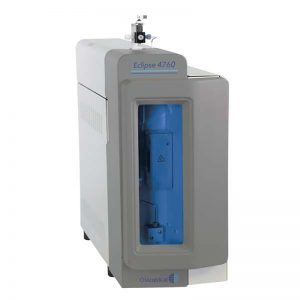In 1986 the United States Environmental Protection Agency (USEPA) introduced Method 502.2 (1) to monitor the levels of 60 aromatic and halogenated volatile organic compounds (VOCs) in drinking water. Some of the volatile contaminants on this list are halogen-containing VOCs, and others contain aromatic properties. The unique characteristics of these components make them excellent candidates to be extracted by purge-and-trap (P&T) technique and analyzed by a photoionization detector (PID) interfaced with an electrolytic conductivity detector (ELCD).
This application note describes instrumentation and analytical conditions that can be used to detect and quantify all 60 VOCs in Method 502.2 as well as Method 8021B (2) using P&T with PID/ELCD tandem selective detectors. Data presented includes all instrument operating parameters, representative chromatograms and analyte retention times for the PID and ELCD detectors, calibration results, accuracy and precision studies, a method detection limit (MDL) study, and analysis of a representative US drinking water.



